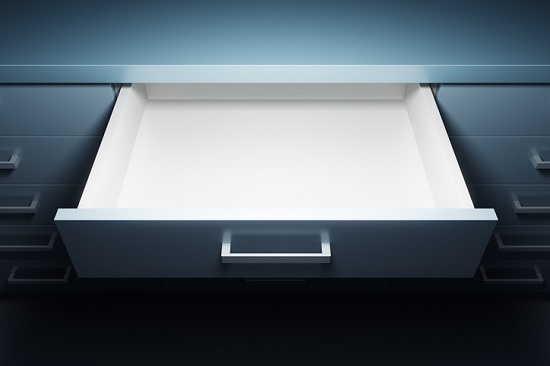
As hearing providers, there’s one particular type of hearing aid that we all worry about. It’s detrimental for the patient, and it can deter others from even attempting to give hearing aids a try.
They’re referred to as “in-the-drawer” hearing aids. In contrast to behind-the-ear or in-the-canal hearing aids, ITD hearing aids never see the light of day, demoralizing the patient and anyone the patient informs about their unfavorable experience.
For the millions of people that have owned hearing aids, a good amount will give up on the possibility of better hearing for one reason or another. But with today’s advanced technology, we know that this should not be the case.
But hearing aids can be complicated. There are many things that can go wrong, triggering an unsatisfactory experience and causing people to give up. But there are ways to protect against this, steps you can take to assure that, with a touch of patience, you get the optimal results.
If you’ve had a negative experience in the past, know somebody who has, or are planning on giving hearing aids a try, you’ll want to continue reading. By appreciating the reasons some people give up on hearing aids, you can eliminate the same mistakes.
Here are the main reasons people give up on hearing aids.
1. Choosing the wrong hearing aid or device
Let’s start with the fact that everyone’s hearing is different. Your hearing loss, like your fingerprint, is also unique to you. Additionally, most people with hearing loss have more challenges hearing higher-pitched sounds, like speech, as compared to other sounds.
And so, if you select a device that amplifies all sound evenly, like most personal sound amplifiers, sound quality will suffer, and you’ll continue to most likely be drowning out speech. You’ll need a hearing aid that is programmed to amplify the particular sounds and frequencies you have trouble with, while suppressing background noise at the same time.
Only programmable digital hearing aids have this capacity.
2. Incorrect hearing aid programming or fitting
Given that hearing loss is unique, the hearing aid must be custom-programmed for you exclusively. If the configurations are inaccurate, or your hearing has changed throughout the years, your hearing expert may have to adjust the settings.
Far too often, people give up too quickly, when all they require is some modification to the amplification settings. Additionally, if your hearing changes, you might need the settings updated. Think about it like prescription glasses; when your vision changes, you update the prescription.
Also, most hearing aids are custom-shaped to the curves of the ear. If you find the fit uncomfortable, it may either just take some time to get used to or you may need a new mold. In either case, this shouldn’t stop you from accomplishing better hearing.
3. Not giving hearing aids a chance to work
There are two problems here: 1) controlling expectations, and 2) giving up too quickly.
If you believe that hearing aids will instantly return your hearing to normal, you’re setting yourself up for discouragement. Hearing aids will improve your hearing drastically, but it takes some time to get used to.
At the outset, your hearing aids may be uncomfortable and loud. This is common; you’ll be hearing sounds you haven’t heard in many years, and the amplification will sound “off.” Your brain will adjust, but not immediately. Plan on giving your hearing aids about 6-8 weeks before your brain completely adjusts to the sound.
Your persistence will be worthwhile—for patients who allow themselves time to adjust, satisfaction rates increase to over 70 percent.
4. Difficulty hearing in noisy surroundings
Patients with brand new hearing aids can become easily overwhelmed in hectic, noisy situations with a lot of sound. This can occur for a couple different reasons.
First, if you right away begin using your new hearing aid in loud settings—prior to giving yourself an opportunity to adapt to them at home—the sound can be overpowering. Try to adjust in calmer environments before testing at a loud restaurant, for instance.
Second, you’ll need to adjust to the loud environments as well, in the same way you did at home. It’s typical to have one negative experience and give up, but remember, your brain will adapt over time.
And finally, you might just need to upgrade your hearing aids. The latest models are becoming increasingly better at filtering out background noise and boosting speech. You’ll want to reap the benefits of the new technology as the speed of change is fast.
It’s true that hearing aids are not for everyone, but the next time you hear a story about how hearing aids don’t work, you should begin questioning if any of the above applies.
The fact that hearing aids didn’t work for someone else doesn’t mean they won’t work for you, particularly if you work with a trustworthy hearing care professional. And if you’ve had a bad experience in the past yourself, perhaps a clean start, better technology, and professional care will make all the difference.
